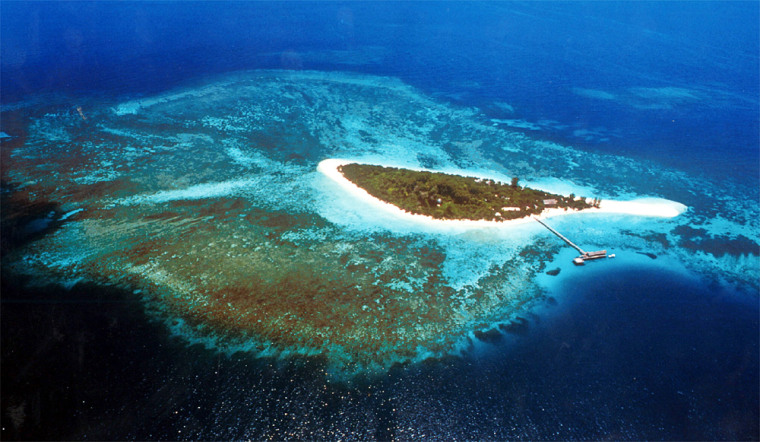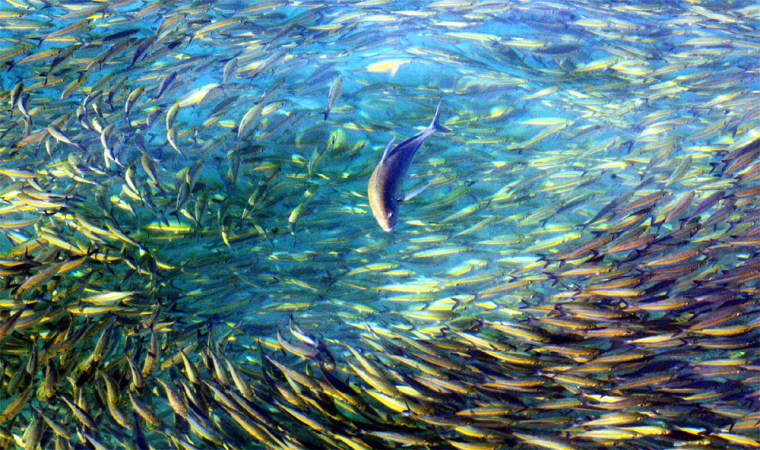If efforts to protect island habitat off northeast Borneo go as private managers plan, they may need some serious military muscle to guard the site’s underwater assets from human predators.
Mature grouper, giant clams and exotic corals around Lankayan island would fetch big money in a poor region dogged by piracy, tourist kidnappings, and blast and cyanide fishing.
“That’s something that we have to discuss with the military, with the authorities and with the enforcement police,” says Don Baker, an executive with management firm Reef Guardian.
“We don’t want to get hurt and we don’t want to cause any loss of life,” he added.
Such potential riches have caught the eye of the Indonesian, Malaysian and Philippine governments, making clear the cost of neglecting an area plagued by sovereignty wrangles.
Ecoregion planned
Next month, the governments are due to announce plans for a Sulu-Sulawesi Marine Ecoregion, tying development for the area’s 45 million inhabitants to the fate of its corals, whales and turtles.
The proposal will be one highlight of a meeting from February 9 to 20 in Kuala Lumpur on biodiversity, when government delegates from around the world will seek ways to slow the rate of global species loss.

Part of their work will be to examine how best to plan, establish and manage protected areas on land and sea.
Overfishing and damage to marine habitats has wrought havoc on world fish stocks, with spillover effects on bird and mammal populations and crippling impacts on poor coastal communities.
Projected temperature hikes due to climate change could make the problem worse in coming decades as species struggle to adapt.
Stocks, habitat laid waste
The Sulu-Sulawesi region, heart of the world’s richest area for marine life, has suffered its share of the damage.
Destructive fishing techniques for food and the aquarium trade, and too many trawlers, have laid waste to stocks and their habitats. Sabah’s valuable prawn harvest has slipped in recent years despite fishermen spending more days at sea.
The proposed ecoregion would extend an existing network of protected areas, beef up turtle conservation efforts and create a sustainable fisheries plan straddling partners’ maritime borders.
A first, 10-year phase will target 58 high priority sites for projects requiring $40 million in global funding.
Geoffrey Davison, the World Wildlife Fund's program director for Malaysia and Borneo, sees the basin’s existing protected zones as a solid baseline from which to start.
“There are some areas also which deserve further protection and a much larger area which demands management rather than protection,” he says.
“That combination of management and protection is the crucial thing, it’s not just protection.”
Island model
The 12-acre Lankayan, recently designated part of a 120,000-acre marine conservation area with two sister islands, could offer a useful management model.
Its reefs are already on the mend after a few years of surveillance led by its owners and dive resort operator.
Increased Malaysian security since tourist kidnappings by armed Filipino raiders on two Sabah resorts in 2000 has helped the state’s reefs recover as illegal fishing activity declined.
For Lankayan, that means regular patrol boat calls and some three dozen M16-toting soldiers deployed at night on its beaches.
The effects are evident in the clear blue water around the jetty, where schools of jack, batfish, longtom and occasional lion fish cruise between the timbers.
Shallow reefs close by see wrasses and black-tipped reef sharks harass shoals of fry while giant cuttlefish, oblivious to snorkelers, lay eggs in the coral.
$5.30 per tourist per night
Reef Guardian conceived and established the conservation zone encompassing Lankayan, persuading various Sabah ministries to give it operational control subject to their oversight.
It charges a management fee of $5.30 per tourist per night to cover the expense, which Baker says is key.
“It’s got to make a buck and it’s got to provide the funding to maintain the conservation area,” he said, adding that private sector players could play a big part in conservation worldwide.
Although all three countries bordering the Sulu-Sulawesi seas run marine protected areas, they have generally struggled for lack of funds, management skill and enforcement.
Sabah Tourism Board chief Zainal Adlin, who is also WWF Malaysia chairman and an avid diver himself, says public or private approaches are fine as long as locals benefit.
“After all, conservation is for whom, for what? Of course for biodiversity and ecological processes and so on but most important, it must have direct benefit to the community.”
